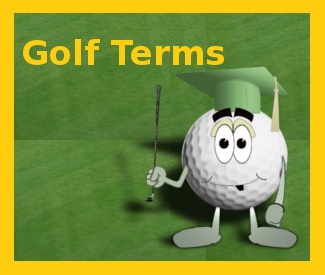Q: What are the benefits of using golf terms? A: Using golf terms offers several benefits, including: 
- Clear Communication: Golf terms provide a common language among golfers, allowing for clear and concise communication on the course.
- Efficient Instruction: Coaches and instructors can effectively convey concepts and techniques using standardized golf terms, enhancing the learning process.
- Enhanced Understanding: Golf terms help players understand the game's rules, strategies, and etiquette, leading to improved performance and enjoyment.
- Improved Course Management: By using golf terms to discuss distances, hazards, and shot types, golfers can better strategize and manage their way around the course.
- Smooth Pace of Play: Familiarity with golf terms promotes faster play, reducing delays and ensuring a smooth pace of play for all players on the course.
Q: What are some common golf terms used on the course?
A: Common golf terms used on the course include:
- Tee Box: The area where players begin each hole by teeing up their ball.
- Fairway: The mowed area of the course between the tee box and the green.
- Green: The smooth, manicured surface around the hole where players attempt to complete the hole.
- Par: The standard number of strokes a skilled golfer is expected to complete a hole or course in.
- Birdie: Scoring one stroke under par on a hole.
- Eagle: Scoring two strokes under par on a hole.
- Bogey: Scoring one stroke over par on a hole.
- Hook: A shot that curves dramatically from right to left (for right-handed players).
- Slice: A shot that curves dramatically from left to right (for right-handed players).
- Bunker: A sand-filled hazard on the course.
- Putting Green: The area around the hole where players use their putters to complete the hole.
- Green in Regulation (GIR): Hitting the ball onto the green within the expected number of strokes for that hole.
- Mulligan: A do-over shot, typically not allowed in formal competitions.
- Handicap: A numerical measure of a golfer's playing ability.
- Approach Shot: A shot played toward the green.
Click Here For A Full List Of Golf Terms
Q: How can golf terms help with course management?
A: Golf terms aid in course management by:
- Discussing Distances: Knowing the distances to hazards and the green helps golfers choose the right club for each shot.
- Identifying Hazards: Using golf terms to describe hazards, such as bunkers and water hazards, assists golfers in planning their shots to avoid trouble.
- Talking Strategy: Golf terms facilitate discussions on strategy, including the best approach to each hole and how to navigate challenging sections of the course.
- Understanding Yardage Guides: Yardage guides and course maps often use golf terms to describe each hole's layout, making them easier for golfers to interpret.
Q: How do golf terms contribute to a golfer's learning process?
A: Golf terms contribute to a golfer's learning process by:
- Providing Clear Instruction: Coaches and instructors can use golf terms to explain techniques, shot types, and swing mechanics more effectively.
- Building a Golf Vocabulary: Learning golf terms builds a golfer's vocabulary, enabling them to communicate with other players and understand golf-related content.
- Promoting Golf Etiquette: Golf terms are often associated with proper golf etiquette, which helps golfers understand and follow the rules and customs of the game.
- Facilitating Instructional Resources: Books, videos, and online resources use golf terms, making them accessible and understandable to golfers seeking to improve their skills.
Q: How do golf terms improve communication during a round of golf?
A: Golf terms improve communication during a round of golf by:
- Speeding Up Play: Using standardized terms allows golfers to communicate quickly and efficiently, reducing delays during play.
- Sharing Distances: Golf terms related to distances help players discuss yardages for shots, club selection, and green reading.
- Identifying Shots: Descriptive golf terms like “fade,” “draw,” “chip,” and “putt” enable players to communicate the type of shot they intend to play.
- Discussing Course Conditions: Golf terms allow golfers to discuss course conditions, weather, and how these factors might affect their shots.
- Interacting with Caddies: Golf terms help golfers interact with caddies, allowing for more effective guidance during the round.
Q: How can understanding golf terms lead to improved performance on the course?
A: Understanding golf terms can lead to improved performance on the course by:
- Making Informed Decisions: Golfers who know golf terms can make better-informed decisions regarding club selection, shot types, and course strategy.
- Correcting Swing Flaws: Recognizing and understanding golf terms related to swing flaws can help golfers address and correct these issues with their technique.
- Using Proper Golf Etiquette: Understanding golf terms associated with etiquette ensures golfers adhere to proper conduct on the course, maintaining a smooth pace of play and respect for others.
- Interpreting Course Information: Golfers who understand golf terms can interpret course guides, yardage books, and other information more effectively, leading to better course management.
- Communicating with Playing Partners: Clear communication using golf terms ensures playing partners are on the same page during the round, minimizing miscommunications and misunderstandings.
Overall, golf terms play a crucial role in enhancing communication, understanding, and overall performance on the golf course. By becoming familiar with golf-specific vocabulary and terminology, golfers can enjoy a smoother and more enjoyable golfing experience while improving their game.





